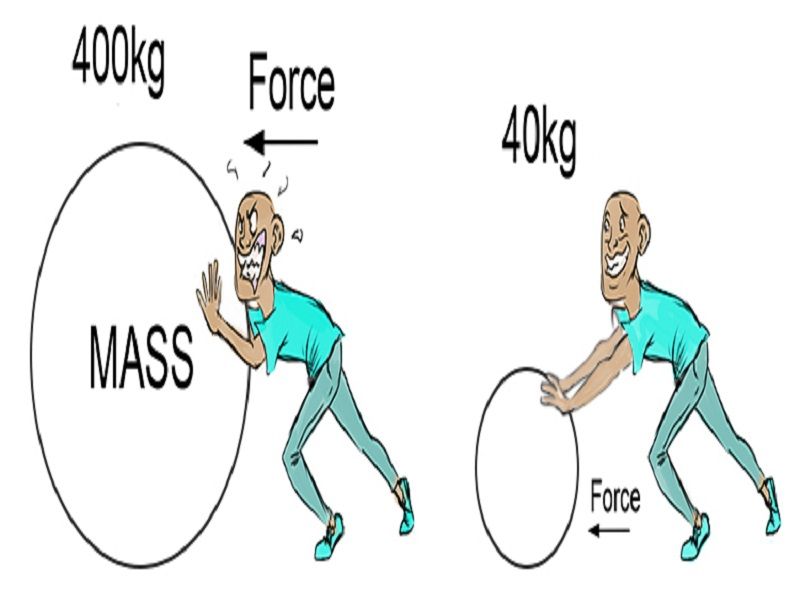
Newton's Second Law as a Guide to Thinking One Newton is defined as the amount of force required to give a 1-kg mass an acceleration of 1 m/s/s. The definition of the standard metric unit of force is stated by the above equation. By substituting standard metric units for force, mass, and acceleration into the above equation, the following unit equivalency can be written. If necessary, review this principle by returning to the practice questions in Lesson 2.Ĭonsistent with the above equation, a unit of force is equal to a unit of mass times a unit of acceleration. If all the individual forces acting upon an object are known, then the net force can be determined. As discussed in an earlier lesson, the net force is the vector sum of all the forces. It is the net force that is related to acceleration. Do not use the value of merely "any 'ole force" in the above equation. It is important to remember this distinction. The acceleration is directly proportional to the net force the net force equals mass times acceleration the acceleration in the same direction as the net force an acceleration is produced by a net force. In this entire discussion, the emphasis has been on the net force. The net force is equated to the product of the mass times the acceleration. The above equation is often rearranged to a more familiar form as shown below. This verbal statement can be expressed in equation form as follows: a = F net / m

Newton's second law of motion can be formally stated as follows: The acceleration of an object as produced by a net force is directly proportional to the magnitude of the net force, in the same direction as the net force, and inversely proportional to the mass of the object. As the mass of an object is increased, the acceleration of the object is decreased.

As the force acting upon an object is increased, the acceleration of the object is increased. The acceleration of an object depends directly upon the net force acting upon the object, and inversely upon the mass of the object. The second law states that the acceleration of an object is dependent upon two variables - the net force acting upon the object and the mass of the object. Newton's second law of motion pertains to the behavior of objects for which all existing forces are not balanced. The presence of an unbalanced force will accelerate an object - changing its speed, its direction, or both its speed and direction. According to Newton, an object will only accelerate if there is a net or unbalanced force acting upon it. Objects at equilibrium (the condition in which all forces balance) will not accelerate. The first law - sometimes referred to as the law of inertia - states that if the forces acting upon an object are balanced, then the acceleration of that object will be 0 m/s/s. And indeed, as illustrated in Figure, the same net external force applied to a car produces a much smaller acceleration than when applied to a basketball.Newton's first law of motion predicts the behavior of objects for which all existing forces are balanced. In other words, the larger the mass (the inertia), the smaller the acceleration produced by a given force. Now, it also seems reasonable that acceleration should be inversely proportional to the mass of the system.

It is a tremendous simplification not to have to consider the numerous internal forces acting between objects within the system, such as muscular forces within the child’s body, let alone the myriad of forces between atoms in the objects, but by doing so, we can easily solve some very complex problems with only minimal error due to our simplification Once the system of interest is chosen, it is important to identify the external forces and ignore the internal ones. The techniques are the same as for the addition of other vectors, and are covered in the chapter section on Two-Dimensional Kinematics.) This proportionality states what we have said in words- acceleration is directly proportional to the net external force. (The net external force is the vector sum of all external forces and can be determined graphically, using the head-to-tail method, or analytically, using components.


 0 kommentar(er)
0 kommentar(er)
